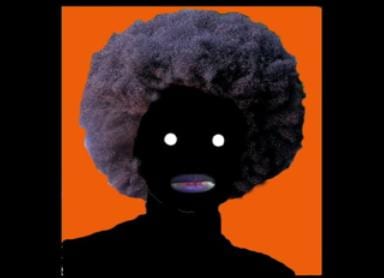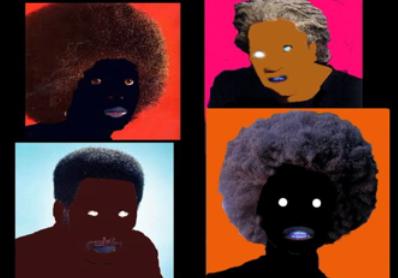Black History Month is 36 years old this February, although its roots as “Negro History Week” go back to 1926. Initiated by Carter G Woodson, the week was intended to raise awareness of African Diaspora history. But Woodson wasn’t interested in tokenism. His goal was to incorporate these underrepresented narratives into North American history as a whole. He hoped the week would eventually “outlive its usefulness.”
Eighty-six years later, and Woodson’s week is now a month observed across North America and the UK.
But how has Black History Month changed? What does it mean in a multicultural, post-desegregation, post-Obama, 21st-century North America? If these questions interest you, consider checking out 28 Days: Reimagining Black History, a group show at the Justina M Barnicke Gallery and Georgia Sherman Projects.
“Work by black artists is often expected to ‘represent’ the race,” explains Pamela Edmonds, one of the 28 Days’ curators. “Subsequently, their art is also placed into an interpretive paradigm that limits its aesthetic value, and by extension, the artist as a practitioner.”
This is a tricky position for an artist to be in.
“Some artists refuse to show their work during Black History Month exhibitions as a political stance against the marginalization of their practices,” says Edmonds. “Others feel it’s one of few opportunities they have to participate in the broader cultural landscape.”
Edmonds and her co-curator Sally Frater selected the work of 18 black artists who explore ideas of identity, race and politics in their work. “We wanted to present the opportunity for Canadian artists to be in dialogue with their contemporaries,” Edmonds says.
One of 28 Days’ Canadian artists is Dana Inkster, an Ottawa-born lesbian media artist currently living in Alberta.
Inkster is showing two pieces at 28 Days. The first is Welcome to Africville, a 1999 docudrama short that chronicles the last days of Halifax’s historic black community. The piece is Inkster’s first film.
“For me, it reflects a definitive moment in time in my life. I was maturing into my sexuality and my heart was on my sleeve,” she says.
The second piece is called For Educational Purposes Only: With Commercial Breaks. “That I made just a few months ago. Side-by-side, I see the work as being reflective of how I have matured, for better or for worse — I think for worse — out of wearing my heart on my sleeve.”
Artists like Inkster bring an interesting perspective to the show; while black and queer can obviously read as “other” to the mainstream, someone who is both may have to choose between communities.
“My race is absolutely how I define myself culturally, more so than my sexuality. I was born black, but I wasn’t born queer. I had to mature into my sexual identity.”
Which isn’t to say Inkster shuns queer identity. “Both my race and my sexuality have allowed me the position of outsider, and this is a wonderful vantage from which to make art,” she explains. “So often, society and institutions have passive-aggressively imposed an identity on me . . . with my practice, I can declare publicly, ‘This is who I am and this is what I feel.’”
Despite her clear interest in black history, Inkster doesn’t call herself an expert. “I’ve spent much of my life living in cultural isolation,” she tells us. “So, Black History Month has simply been a chance for me to hear and learn more about people’s reflections on my race as it speaks — or, most often, doesn’t speak — to them.”
But what about that other month-long celebration of a marginalized people? Pride and Black History Month aren’t often mentioned in the same breath, but they must have something in common, right?
“I think the Maya Angelou adage ‘We are more alike than unalike’ applies,” says Inkster, judiciously. “It’s a complex comparison. But my mind immediately goes to the necessity of informing future generations of what went down before. Civil rights legacies and histories are so valuable . . . Erasure from one generation to the next is a powerful tide.”
For Inkster, one legacy to pass down might be the intersection of queer and black culture that occurred during (and after) the Harlem Renaissance, which gave us poet Langston Hughes, blues singer Bessie Smith and novelist and playwright James Baldwin. “Where would I be without James Baldwin?” Inkster asks. “I haven’t a clue. I was watching this stellar documentary The Black Power Mixtape, which I really dug, but there was no mention of James Baldwin or the Harlem Renaissance. How can that be?”
Is there room for queer sexuality at Black History Month?
“I would absolutely hope so,” asserts Inkster, but like Carter G Woodson, she isn’t interested in tokenism. “I don’t need spokespeople, but there is room to appreciate how race and sexuality intersect to define a person’s perspective on the world.”
The Deets:
28 Days: Reimagining Black History Month
Runs till Wed, Feb 29
Justina M Barnicke Gallery
7 Hart House Circle
jmbgallery.ca


 Why you can trust Xtra
Why you can trust Xtra


